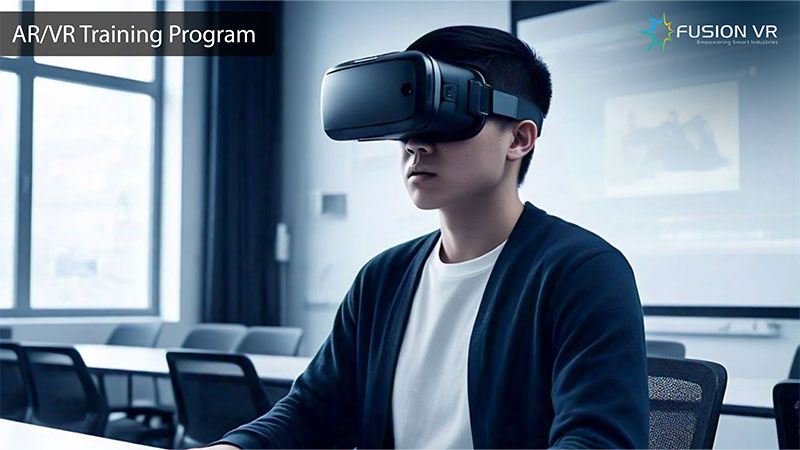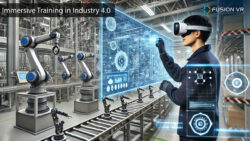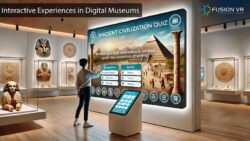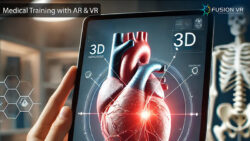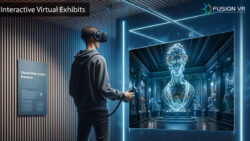In today’s quick-changing tech world, AR and VR are more than just trendy words. These game-changing tools are changing industries, from healthcare to manufacturing. They offer hands-on learning that boosts training and skill growth. Starting your own AR/VR training program from nothing might look tough at first. But if you take the right steps, you can build a program that fits what you need and want to achieve. This guide will show you the key steps, things to think about, and tips to design and develop a training program that works well.
To start with, let’s consider the unique capabilities and benefits of AR and VR. While the former overlays digital information onto the real world and stimulates reality with interactive elements, the latter creates a completely virtual world, fully thrusting the user into a controlled, simulated space. Each has its distinct merits, and this is what will determine your choice for your training goals. For instance, AR is at its best for hands-on training at practice sites in health care and engineering where there’s a need for real-world context. In contrast, it is suitable for high-risk or complex scenarios where there can be improvement in focus and retention through immersion. The examples include safety drills or machinery operations.
Before going to the technical specifics of AR/VR training development, the objectives of your program must be defined. What skills or knowledge should participants attain? How can these skills be implemented in real-life situations? A clear and measurable plan will help outline every detail that will be integrated into your design for an AR/VR program. The target audience also needs to be considered, specifically their level of expertise, how they learn best, and familiarity with technology. A user-centered approach ensures your program is not just effective but engaging and accessible for users.
Then, outline the content and scenario for your AR VR courses. Identify the most important learning modules, create storyboards for scenarios, and map out what interactions will occur in them. AR VR program design thrives with interactivity and immersion, so think creatively about how to integrate simulations, problem-solving activities, and real-time feedback. For example, a training module in VR could present an emergency response simulation of fire in which students practice evacuation protocols. Similarly, a retail AR application might project the customer’s profile and the details of the products being sold at any point in real time to provide the opportunity to practice personalized service.
When your content is out, it’s time to make the right selections of tools and platforms for its development. From software to hardware and development tools, the landscape of AR/VR offers varied options to satisfy one’s needs and budgets. Popular VR headsets such as Oculus Quest, HTC Vive, and PlayStation VR offer immersive experiences, while other AR platforms and mobile AR applications are designed to support on-the-go learning activities. Unity and Unreal Engine lead the way when it comes to developing AR/VR content software. They come with robust features and flexibility in development. Your tools should reflect your scalability needs, be easy to use, and support your systems in place. It is all about investing in the right tools for AR VR training development.
Budgeting and resource allocation are one of the critical elements in designing an AR/VR training program. Although the AR/VR technologies have become more accessible, they still need much investment in hardware, software, and human resources for the development process. Conduct a thorough budget that covers development, equipment purchases, proper maintenance, and upgrade. Collaboration with the experienced AR/VR development experts or companies may further facilitate the process with quality output. Alternatively, if you have an in-house team, it is also cost-effective to upskill your staff by investing in AR VR courses.
Prototyping and testing of the AR VR program form a very important step in the entire design process. After developing the initial modules, take them to pilot groups to get usability, effectiveness, and engagement feedback from the participants. This is the first step toward iterative improvement before large-scale implementation. Pay attention to UX and UI design intuitive navigation, responsive interactions, and clear instructions are crucial to ensuring a smooth learning experience. Remember, AR/VR training development is just as much about the learning journey as it is about the technology.
Integration with existing learning management systems or platforms is another factor. Most organizations have learning management systems to manage their training programs. Integration of AR/VR modules into these systems or platforms will increase the effectiveness of training programs. For example, you can include performance metrics, follow-ups on progress, and certifications within the AR/VR training program, thereby giving a holistic overview of what participants have acquired. More importantly, ensure that your program is compatible with many devices and several operating systems in order to maximize accessibility and reach.
One of the main benefits of AR/VR training lies in the real-time analytics and insights it can bring. You can incorporate data collection mechanisms in your program to monitor participants’ performance, identify areas for further improvement, and determine the overall influence of the training. In other words, such insights not only enhance the learning outcomes of the trainees but also inform future versions of your program, ensuring continuous improvement and alignment with organizational objectives.
Another key point to be taken into account during the design of an AR VR training program is scalability. Since your organization grows, your training needs change as well, and so should your program. Scalability will be achieved by modular design, cloud-based platforms, and flexibility in content updates. It will also be important to have a plan for future developments, such as adding new scenarios, reaching different departments, or implementing AI-driven personalization capabilities.
Marketing and onboarding are often the least considered aspects of AR/VR training development. However, these are the aspects that will determine the success of the program. Develop effective promotional materials that promote the benefits of your program, and ensure participants are well equipped with the onboarding sessions to understand the technology and its applications. In this regard, it is very important to be prepared for potential resistance to change. Highlight how AR/VR training can improve productivity, safety, and skill acquisition compared to traditional methods.
Monitor its effectiveness as you continue rolling out the AR/VR training program. Continue gathering participants’ feedback in terms of improvements on content that make it fresh, exciting, and updated on the advancement of AR/VR technologies so new features can be integrated into capabilities. This is not one-time work on a successful AR/VR training program; rather, it’s ongoing and demands constant commitment, creativity, and flexibility.
To summarize, creating and developing an AR/VR training program from the ground up is a multi-faceted exercise with great promise to enhance learning and development. You can have a program that offers meaningful and measurable results when you focus on clear objectives, user-centric design, and robust development tools. Be it health professionals, engineers, retail employees, or any other workforce being trained, the AR VR course and training module can revolutionize the way skill acquisition and its application take place. Embrace the possibilities of AR/VR technology and take that first step towards building a training program that will prepare your organization for the future.

